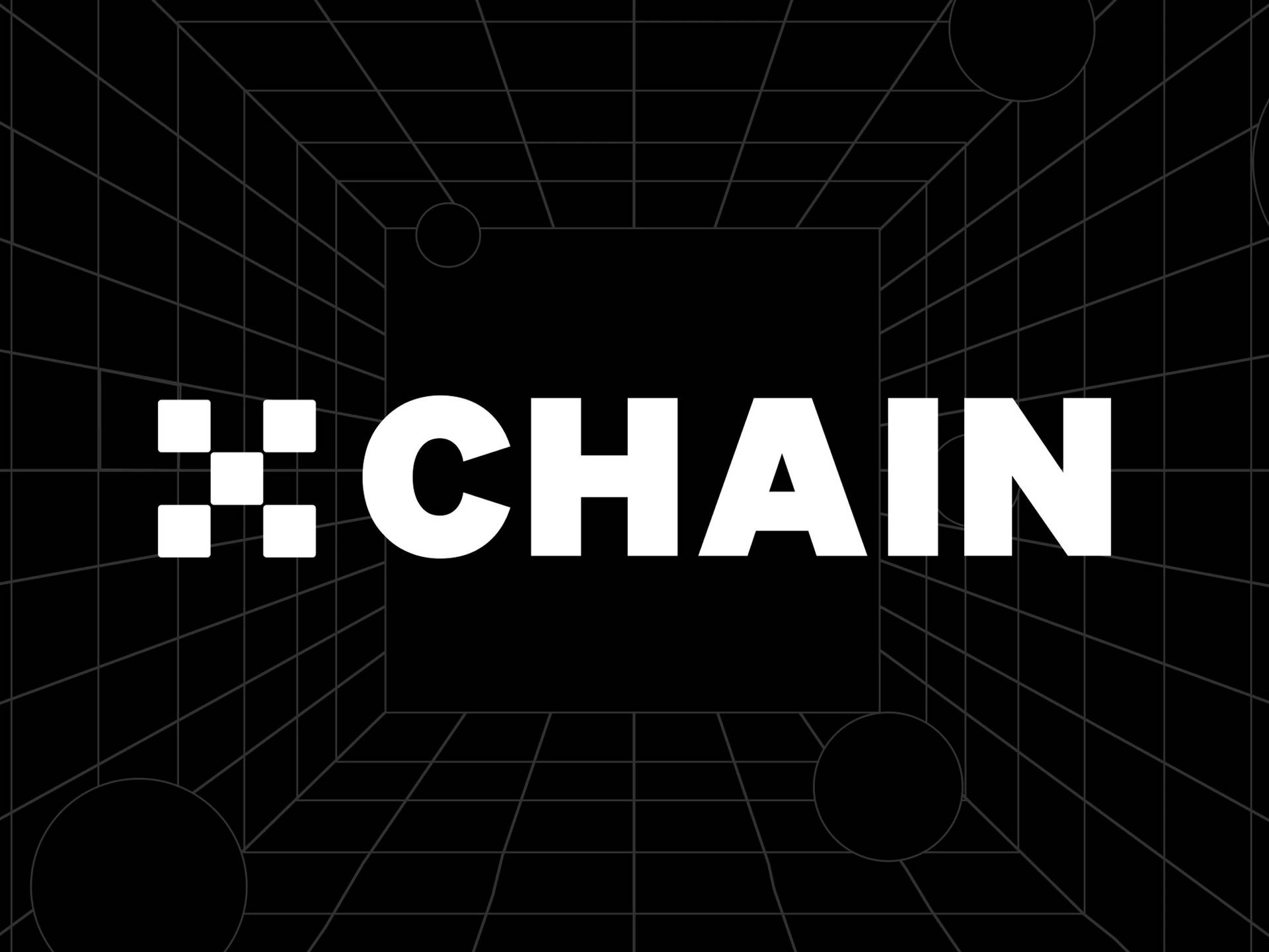Subscribe to wiki
Share wiki
Bookmark
OKTChain
We've just announced IQ AI.
OKTChain
OKTChain, integrated within the OKX ecosystem, is an EVM and IBC-compatible Layer 1 blockchain network developed on Cosmos, emphasizing interoperability and performance. It aims to provide developers with efficient tools for building and scaling applications, offering low gas fees and high scalability.[1][2]
Overview
OKTChain, which launched its testnet in February 2020, prioritizes technological exploration and refinement. Emphasizing advancements like sharding, consensus optimization, and cross-chain asset integration, OKTChain adopts Cosmos architecture for its dApp-chain concept.
With enhanced consensus mechanisms, it aims to achieve high scalability and performance, supporting up to 5000 Transactions per Second (TPS). Through Inter-Blockchain Communication (IBC), OKTChain seeks to enable swift value transmission within the Cosmos ecosystem.
Fully compatible with the Ethereum Virtual Machine (EVM), it offers a developer-friendly environment with open-source access and integrates with oracle protocols like Chainlink. With a focus on security, OKTChain provides reliable smart contract auditing, with the goal of mitigating centralization risks in blockchain networks.[3][4][5]
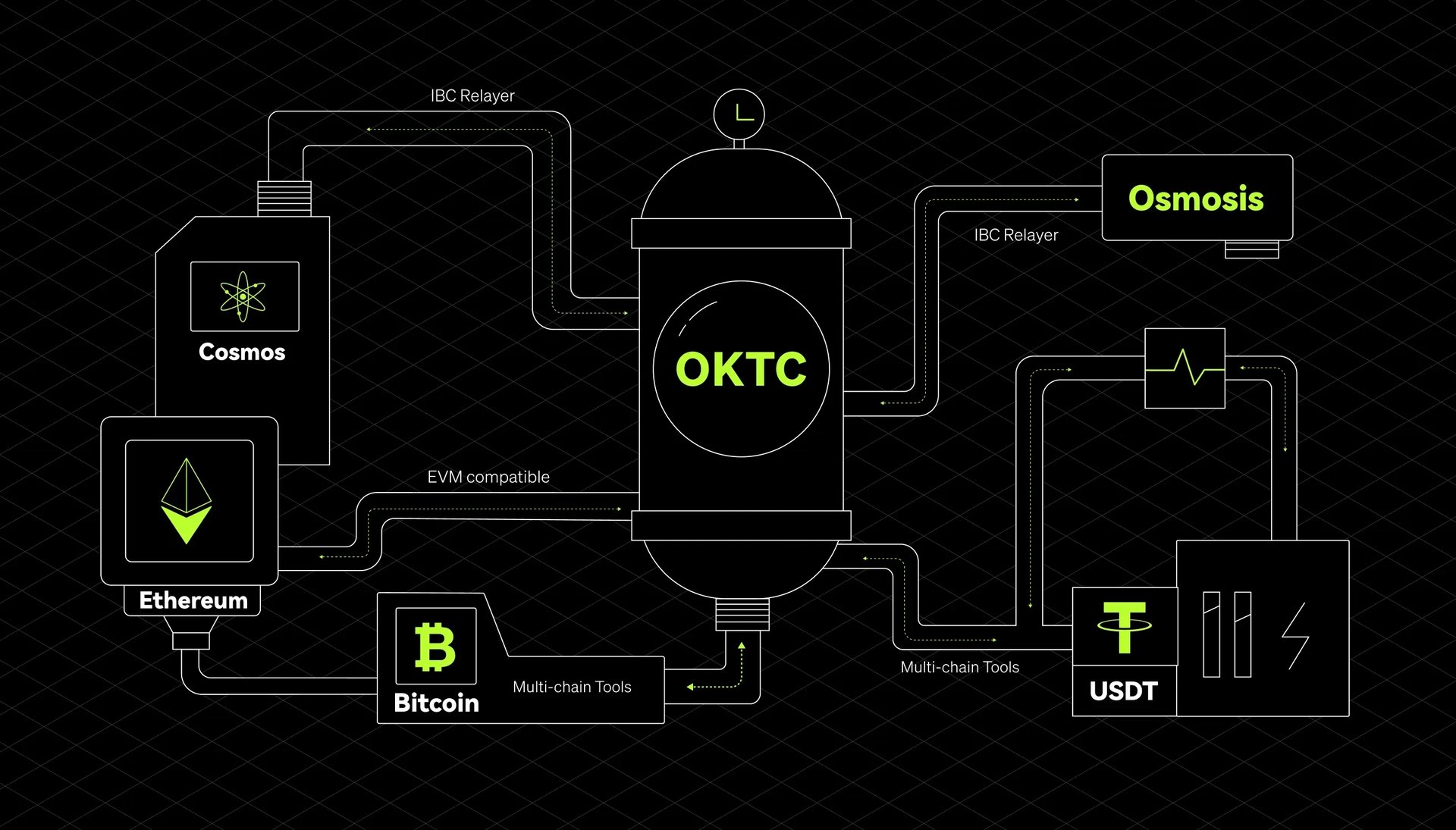
Blockchain Middleware
OKTChain introduces the concept of "blockchain middleware" to streamline application development, with the goal of reducing costs. It facilitates resource sharing across technical architectures, similar to middleware in various industries. Token holders have the opportunity to participate in OKTChain's security and governance by delegating tokens for rewards and voting on proposals.[6]
OKTC Explorer
OKTC Explorer, provides users with the ability to search, view, and analyze OKTC data, such as blocks, transactions, validators, and other essential information. Through OKlink and exchaincli, users can interact with the OKT Chain, accessing features like accounts, transfers, delegation, and governance. Exchaincli is particularly noteworthy for its comprehensive support of OKT Chain features.[10]

History
2020
In 2020, the OKTC team worked on refining aspects like sharding, consensus optimization, and cross-chain asset integration. They adopted the Cosmos architecture for its dApp-chain concept, leading to the development of the initial OKTC version.
The OKTC testnet debuted in February 2020.[4]
2021
In May 2021, OKTChain introduced EVM compatibility to address the need for Ethereum Virtual Machine support within the blockchain ecosystem. By November 2021, OKTChain aimed to enhance scalability, targeting an increase in transaction throughput to 5,000 TPS by 2022.
Additionally, OKTChain launched the 0xTalks podcast series, intended to provide insights into crypto, DeFi, and GameFi trends from industry influencers.[4][25]
2022
In 2022, OKTChain encountered challenges while progressing in ecosystem growth and optimizing performance. Efforts were focused on enhancing user and developer experiences, resulting in advancements in interoperability. The platform forged partnerships with entities such as Tether (USDT) and Unstoppable Domains, expanding its global community to over 73,000 members.
Moreover, significant upgrades, including the integration of the IBC protocol, were implemented to facilitate efficient asset transfers between OKTChain and other blockchain networks. Initiatives such as the Gas Back program and the introduction of Liquid Staking were designed to stimulate growth within the dApp ecosystem and bolster OKT's utility within DeFi protocols.[22]
2023
In 2023, OKX launched OKB Chain (OKBC) as an Ethereum Layer 2 network, initially utilizing sidechain technology and later transitioning to a Layer 2 scaling solution based on ZK technology. Simultaneously, the OKX team concentrated on advancing the OKT Chain ecosystem, previously known as OKC/OKX Chain, by supporting Wasm and exploring innovative consensus models.
Amidst the surge in DeFi activities, the focus shifted towards technical improvements and addressing community requirements, resulting in adjustments such as reducing block rewards to 21 million OKT by 2028 and emphasizing decentralized governance. Moving forward, OKTC aims to enhance OKT's practical applications, foster decentralized governance, implement cross-chain initiatives, explore emerging technologies, and engage the community through the OKTC Community Program.[23][24][4]
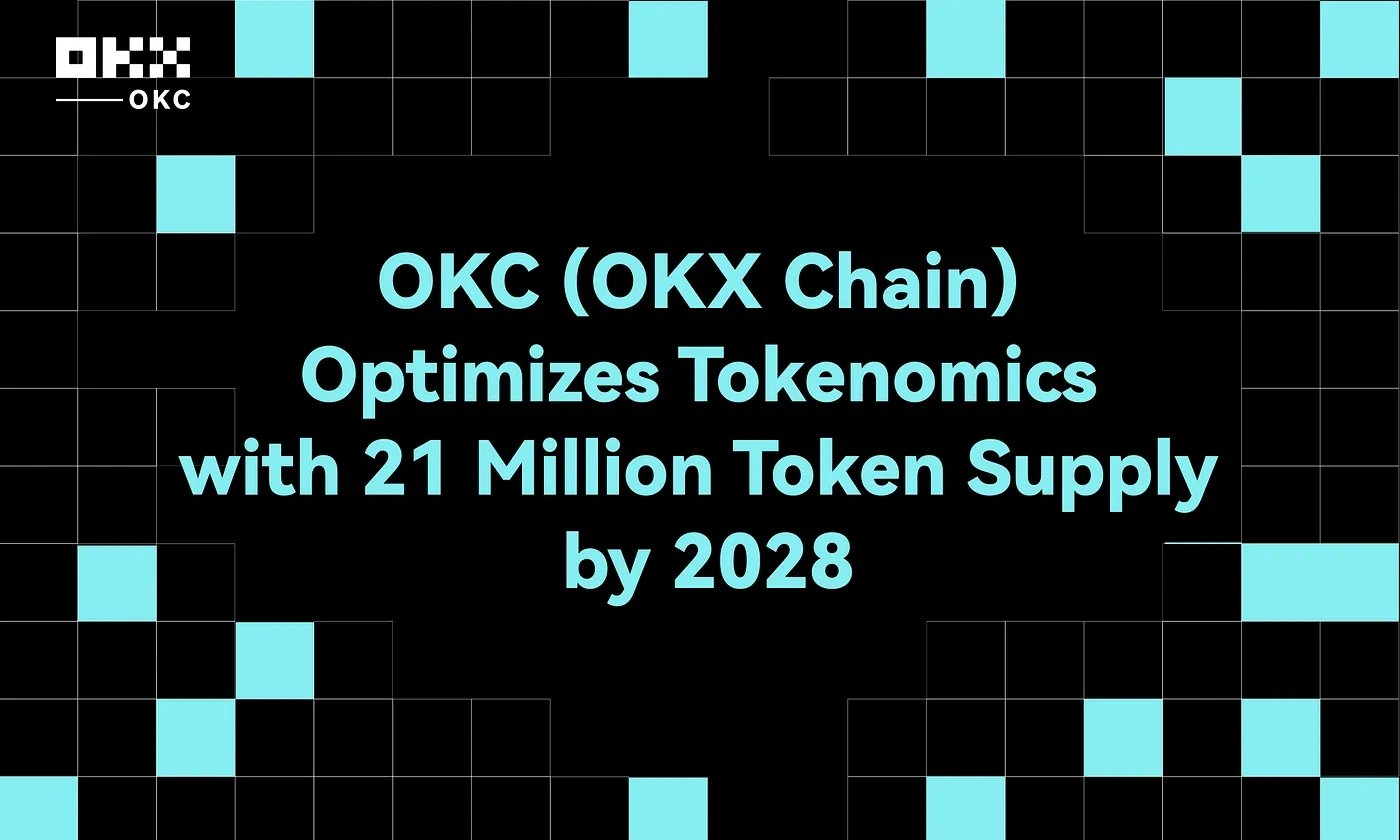
OKTC Nodes
- Full Node: A Full Node in Tendermint maintains the blockchain ledger's state, validates transactions, and executes smart contracts. It contributes to network security and serves as a data source for OKTC ecosystem applications.
- Validator: A Validator in Tendermint participates in the Proof-of-Stake consensus by proposing and voting on blocks. Validators stake cryptocurrency as collateral, ensuring network security, and receive rewards for maintaining network integrity.[11]
OKTC Users
Normal users facilitate transactions using compatible software, contributing to network health and liquidity. Developers prioritize user-friendly applications to sustain ecosystem growth. Delegators stake cryptocurrency to validators, who ensure network security by running full nodes and participating in consensus.
Proposers in Tendermint arbitrate and select the next leader node before each block, ensuring blockchain efficiency and security through rotation. Candidate proposers are chosen based on factors like stake and past performance to promote decentralized block generation and network security.
Proposers maintain correct software versions, secure private keys, and actively participate in governance by voting on proposals, engaging with the community, and adapting to ecosystem changes.[12][13]
Consensus Architecture
OKTC utilizes the Cosmos SDK for modularity and composability, while Tendermint Core ensures Byzantine Fault Tolerant (BFT) State Machine Replication (SMR). This setup allows developers flexibility in selecting programming languages. Validators propose and commit blocks, with delegators determining validators based on reputation and stake. Tendermint's rotation mechanism promotes fairness in proposer selection.
The consensus process involves steps like proposal, pre-vote, and pre-commit, ensuring validator agreement. ABCI facilitates communication between Tendermint Core and applications, enabling developers to write blockchain apps in any language. OKTC's EVM module aims to ensure compatibility with Ethereum, supporting EVM state transitions for a familiar developer experience.[14][15][16]
OKTC Solutions
Liquid Staking
OKTChain's Liquid Staking protocol aims to improve OKT token usability by enabling users to earn staking rewards while maintaining flexibility. Users can swap OKT for stOKT and utilize it in various DeFi applications, eliminating traditional barriers like minimum token requirements and lock-up periods.
stOKT tokens automatically accrue rewards, allowing users to claim their initial staked OKT and accumulated rewards by unstaking. This protocol aims to provide OKT holders with enhanced flexibility and accessibility in the staking process, contributing to a more dynamic ecosystem.[18]
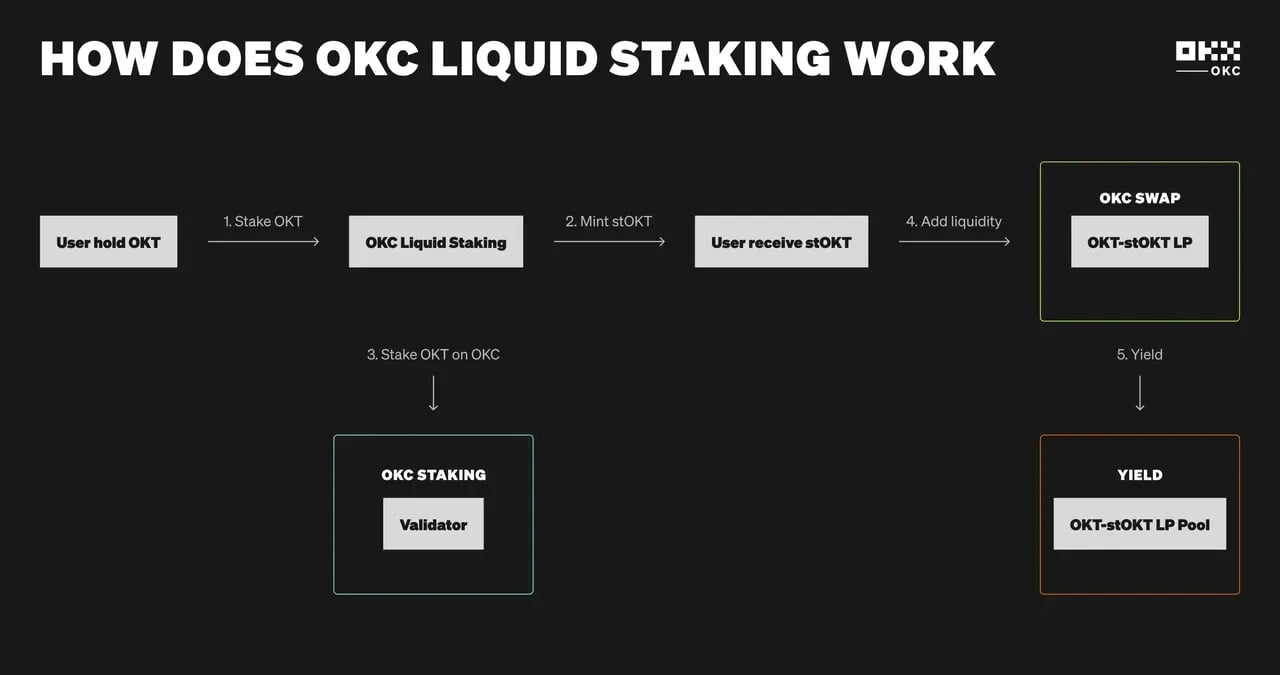
OKTCSwap
OKTChain's OKC Swap is a decentralized exchange (DEX) designed to minimize slippage in volatile crypto markets. Slippage, the variance between expected and actual trade prices, correlates inversely with liquidity. OKC Swap, supported by OKX, prioritizes safety and stable swaps with minimal slippage.
This reflects OKTChain's commitment to providing a reliable platform. OKC aims to enhance interoperability without compromising scalability or security, envisioning a multi-chain network offering equal opportunities for users, developers, and projects.[19][20]
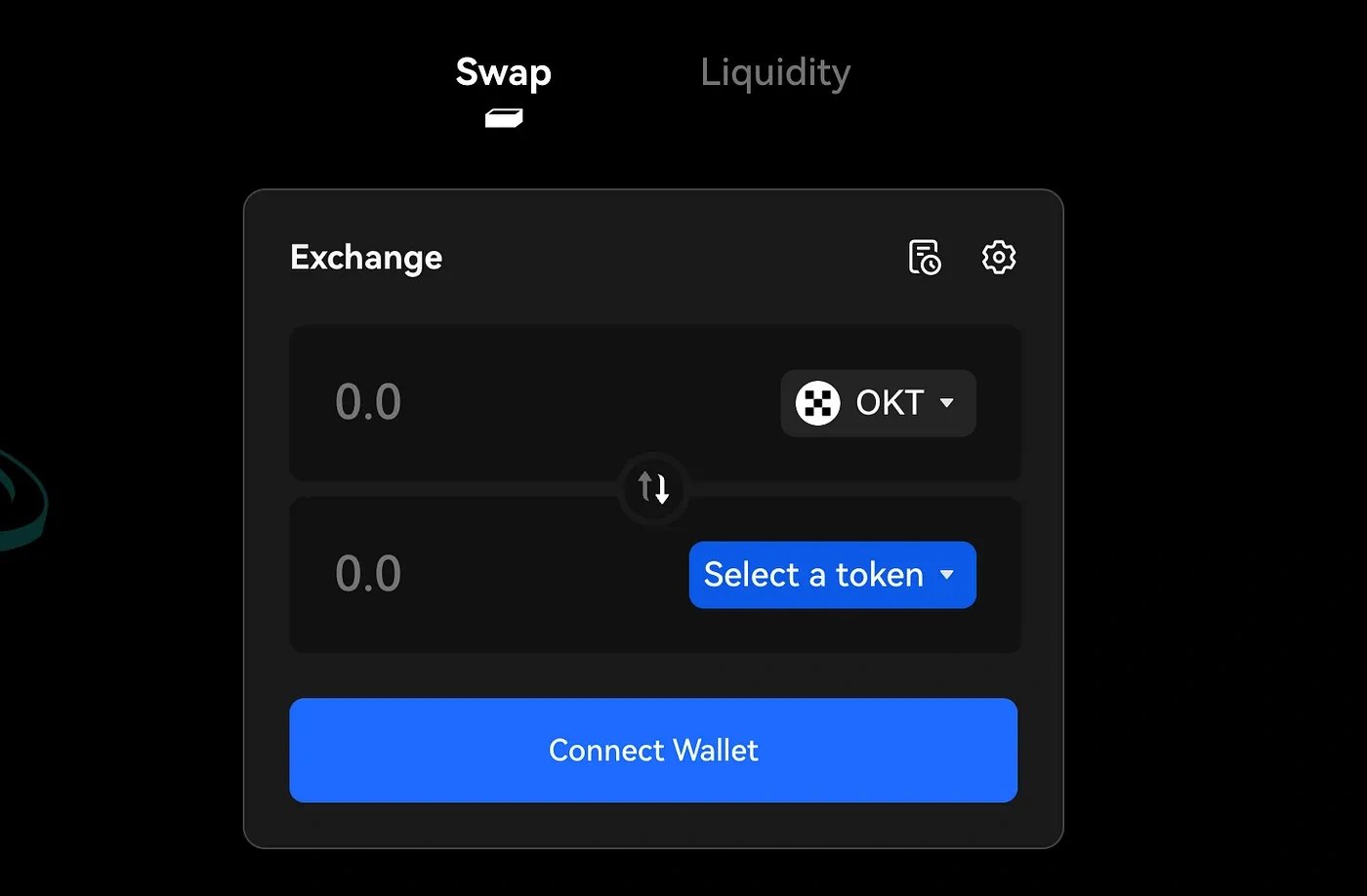
OKTCBridge
OKTChain's OKC Bridge, facilitated by the Inter-Blockchain Communication (IBC) protocol, aims to improve cross-chain interoperability by connecting OKTChain with other IBC-supported chains for efficient asset transfers. For instance, Tether (USDT) also expanded into the Cosmos ecosystem via OKTChain, representing the first issuance on a Cosmos-powered ecosystem.
Developers have the opportunity to utilize the IBC Relayer and OKTChain supernodes for cross-chain operations with Cosmos. Additionally, the OKC bridge upgrade incentivizes users by providing an OKT airdrop for bridging over US$100 worth of supported tokens to OKTChain, which supports eight chains, including Ethereum, TRON, Bitcoin, Litecoin, Bitcash, Polkadot, Filecoin, and Ripple (XRP), offering gas fee solutions for all users.[20]
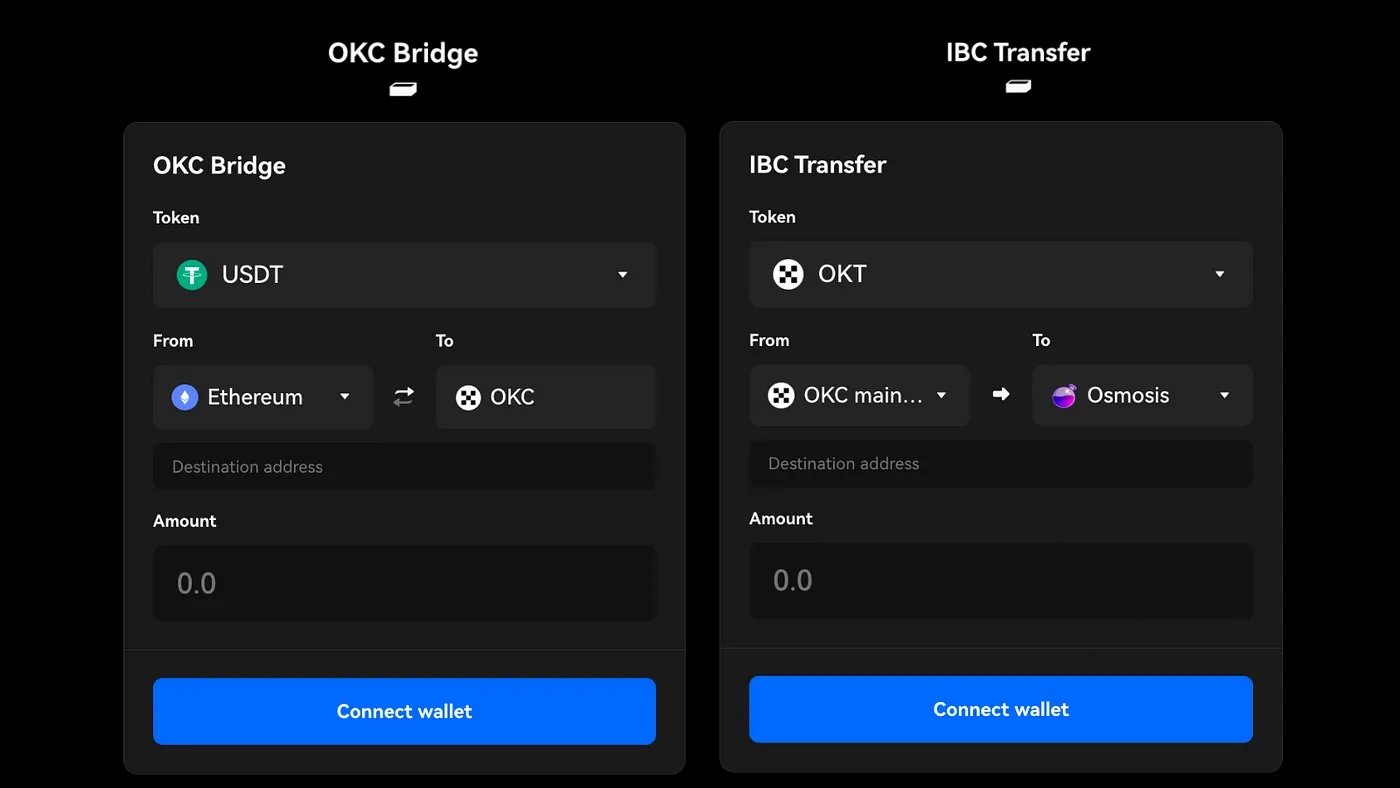
OKTC VRF
OKTChain's VRF (Verifiable Random Function) ensures unbiased random values for smart contracts. It provides cryptographic proof to prevent manipulation by any entity, including oracle operators and users. OKTChain VRF supports various applications, including blockchain games and NFTs, by offering two request methods: Subscription, which centralizes funding, and Direct funding, where contracts pay directly with OKT.[21]
OKToken
OKT tokens are integral to the OKTChain ecosystem, offering multiple utilities to holders. Owners can actively participate in network security and governance by delegating OKT to validators, earning more tokens through Delegated Proof-of-Stake. Additionally, OKT holders can influence network decisions through voting. Validators are required to stake 10,000 OKT, with additional tokens needed for governance proposals.
Staking OKT grants voting rights, with each token equating to one vote. OKT also serves as staking rewards for validators and enables participation in OKTChain's DeFi protocols, as well as other Web 3.0 sectors like GameFi and NFTs, providing engagement and value opportunities.[7][8][9]
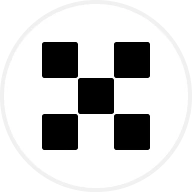
Distribution
OKT has a capped supply of 21 million tokens, with 10 million distributed initially. Approximately 17.85 million tokens are currently in circulation, with about 6.3% locked. The reward-halving mechanism reduces token issuance gradually, aiming for full liquidity by 2028.
Initial distribution favored early OKB holders, while annual issuance now goes to block validators.[9]
Governance
OKTChain's governance aims to uphold fairness and security in decision-making. Proposers are required to stake OKT to initiate proposals, with the intention of discouraging malicious activity. Voting involves bonded OKT holders, except in specific circumstances. Vote weight is determined by the quantity of bonded OKT.
To prevent duplicate voting, the voting period is designed to be shorter than the unbonding period, typically set at a minimum duration of 72 hours. OKTChain supports four proposal types: Text, Parameter, Software Upgrade, and Delist. Proposals progress through initiation, deposit, vote, and execution stages, excluding Text Proposals, which omit the execution stage.[17]
See something wrong?
